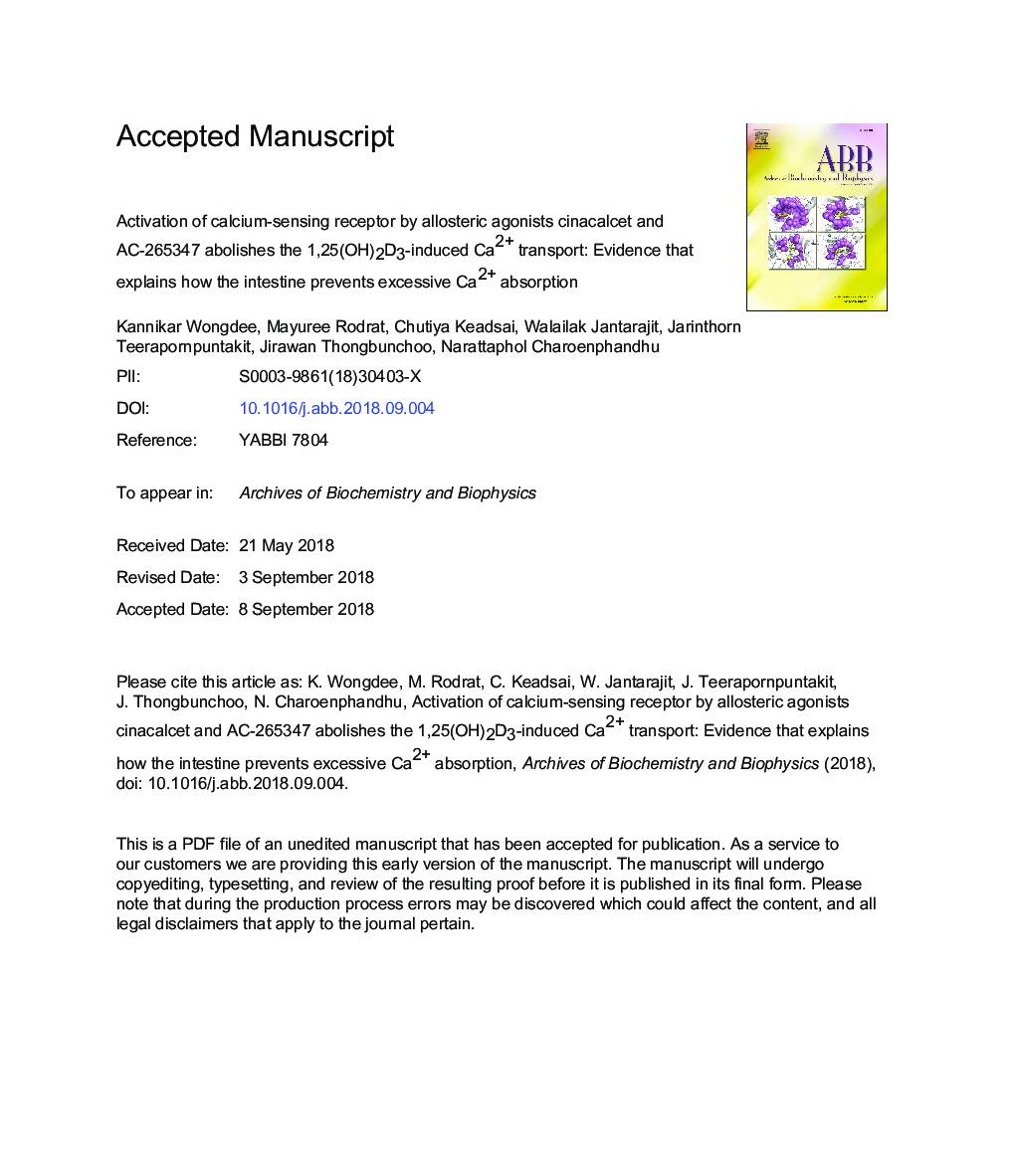| Article ID | Journal | Published Year | Pages | File Type |
|---|---|---|---|---|
| 10156660 | Archives of Biochemistry and Biophysics | 2018 | 32 Pages |
Abstract
Long-term high-calcium intake and intestinal calcium hyperabsorption are hazardous to the body. It is hypothesized that enterocytes possess mechanisms for preventing superfluous calcium absorption, including secretion of negative regulators of calcium absorption and utilization of calcium-sensing receptor (CaSR) to detect luminal calcium. Herein, Caco-2 monolayers were treated with high doses of 1,25(OH)2D3 to induce calcium hyperabsorption or directly exposed to high apical calcium. The expression of counterregulatory factor of calcium absorption, fibroblast growth factor (FGF)-23, was also investigated in the intestine of lactating rats, which physiologically exhibit calcium hyperabsorption. We found that FGF-23 expression was enhanced in all intestinal segments of lactating rats. In Caco-2 monolayers, high apical calcium and 1,25(OH)2D3 induced FGF-23 secretion into culture media. FGF-23 antagonized 1,25(OH)2D3-induced calcium transport and led to a significant, but small, change in paracellular permeability. Furthermore, high-dose 1,25(OH)2D3 upregulated FGF-23 expression, which was prevented by CaSR inhibitors. Activation of apical CaSR by cinacalcet and AC-265347 abolished 1,25(OH)2D3-induced calcium transport in a dose-dependent manner. In conclusion, the intestinal FGF-23 expression was upregulated in conditions with calcium hyperabsorption, presumably to help protect against excessive calcium absorption, while CaSR probably monitored calcium in the lumen and induced FGF-23 production for preventing superfluous calcium uptake.
Keywords
Related Topics
Life Sciences
Biochemistry, Genetics and Molecular Biology
Biochemistry
Authors
Kannikar Wongdee, Mayuree Rodrat, Chutiya Keadsai, Walailak Jantarajit, Jarinthorn Teerapornpuntakit, Jirawan Thongbunchoo, Narattaphol Charoenphandhu,
